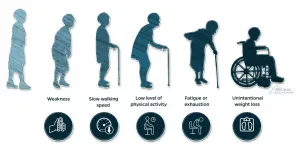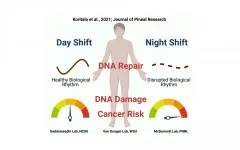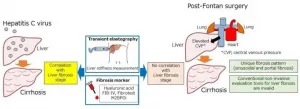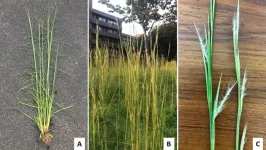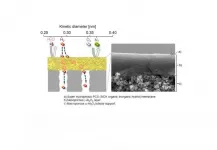Biological artificial organs like skin, vessels...now produced more easily
A platform developed for nanopattern-based alignment of multiple cell types and differentiation into desired cells. Implications for shortened drug development processes using artificial organs as an alternative for animal-based preclinical studies
2021-03-08
(Press-News.org) A Korean research group has developed a technology that allows for the differentiation of stem cells into desired cell types, such as vascular mural cells or osteoblasts, without special pretreatment. This technology is expected to facilitate the production of artificial organs for preclinical studies or artificial tissues for transplants such as artificial skin and cardiac patches.
The Korea Institute of Science and Technology (KIST) announced that the research group led by Dr. Youngmee Jung of the Center for Biomaterials has developed a new cell co-culture platform based on porous, ultrathin membranes that can culture multiple types of cells simultaneously to form tissues similar to those native to the human body.
"Cell co-culture," in which different types of cells are cultured together, is one of the methods used in making artificial organs that can be used as substitutes for animal-based preclinical studies, which are required for drug development. Because the human body consists of various types of cells, "cell co-culture" is crucial in simulating human tissues as closely as possible and is currently in use in most research fields that involve simulating biological tissues. However, simply mixing and culturing different types of cells together often causes fast-growing cells to overwhelm the others, leading to a lack of growth of the remaining cell types.
Among the cell culture platforms developed to resolve this issue, the platform using porous membranes had limitations in that the relative thickness of the membrane and the low density of the pores failed to induce active cell-cell interactions. Moreover, additional treatments were required to compensate for the differences between the environment of the platform and the in vivo environment, where cells actually grow.
To overcome such limitations, the researchers at KIST have developed a platform with membranes that are 10-times as thin as the existing ones and have a higher density of pores, enhancing cell?cell interactions. Using a soft and elastic polymeric material and enabling the elastic adjustments of the thin membrane, the new co-culture platform displays surface traits similar to those of the *extracellular matrix, providing cells with an environment similar to that of the body. Furthermore, considering that tissues in blood vessels, muscles, heart, and other parts of the human body are often aligned in certain directions, the platform developed by the research group at KIST is suitable for culturing tissues as it can align cells without any further treatment, through pore alignment and nanoscale pattern formations using the elasticity of the membrane.
* Extracellular matrix: A structure formed in cellularized microenvironments by proteins and other molecules secreted by local cells. Extracellular matrix provides structural support for cells and intercellular connections, playing important roles in cell-to-cell communication, including signal transduction, guiding cell fate decisions during embryonic development.
When vascular endothelial cells that form the inside of human blood vessels were co-cultured on this platform along with stem cells that can differentiate into vascular mural cells, the differentiation of stem cells into vascular mural cells was approximately 2.5-times greater than that observed on commercially available platforms, and vascular endothelial cells effectively formed cell-cell junctions, displaying a remarkable endothelial barrier function.
"This cell co-culture platform enables cell cultures that are simpler but more efficient than the currently available commercial platforms, and therefore displays high potential as an alternative tool for preclinical studies that can replace animal testing in pharmaceutical companies, hospitals, and other fields that require biological evaluations." said Dr. Youngmee Jung of KIST.
This research was supported by the Nano Material Technology Development Program of the National Research Foundation of Korea(NRF) with support from the Ministry of Science and ICT (MSIT), and the results have been published in the latest issue of 'Advanced Functional Materials', an international journal on functional materials.
INFORMATION:
[Attachments] See images for this press release:

ELSE PRESS RELEASES FROM THIS DATE:
2021-03-08
In recent years there has been an increased focus on the circular economy and a heightened demand for products made of recyclable materials, however many materials can only be recycled so many times before they begin to wear out.
This is the case with carbon fibre reinforced polymer (CFRP) composites, non-biodegradable materials which, until now, have lacked a viable recycling method.
CRFP composites are present in products such as wind turbines, aeroplane parts, vehicles such as cars and ships, and everyday technology such as laptops and mobile ...
2021-03-08
FOR IMMEDIATE RELEASE
Physicians understand frailty as a dysregulation among multiple systems in the body that make it less resilient and unable to recover completely when faced with a physical challenge such as injury or illness. "Defining frailty on a scientific level, however, has been a challenging task," explains END ...
2021-03-08
SPOKANE, Wash. - New clues as to why night shift workers are at increased risk of developing certain types of cancer are presented in a new study conducted at Washington State University Health Sciences Spokane. ...
2021-03-08
It is well-known that patients who undergo Fontan surgery slowly develop liver fibrosis for years post-operatively. In the past decade, these incidences have been steadily increasing and this is due partly to the need for an accurate diagnostic method. A research group led by Dr. Daisuke Tokuhara, Associate Professor of Pediatrics, Osaka City University Graduate School of Medicine and Dr. Yuki Cho have found that the conventional methods of ultrasound elastography and biomarkers via blood tests do not show the actual status of postoperative liver ...
2021-03-08
INDIANAPOLIS -- In a study conducted shortly before COVID-19 vaccines became available in the U.S., more than two-thirds of nursing home and assisted living staff in Indiana indicated willingness to receive a vaccine immediately or in the future. The study was led by researchers from Regenstrief Institute, Indiana University and the State of Indiana. Vaccine uptake by front-line staff is important because it will help protect against serious illness and death for the high-risk people who receive care in these facilities.
"The vaccines offer the opportunity to return to a more normal life within the nursing ...
2021-03-08
Native to the southeastern United States, a weedy grass has spread northward to Canada and also made its way to Australia and Japan. Andropogon virginicus grows densely packed and up to seven feet tall, disrupting growth patterns of other plants and competing for resources. When burned, it grows back stronger. There is no way to effectively remove the weed once it has invaded. But there might be a way to use it to human advantage.
An international team of researchers has found that A. virginicus extracts appear to be effective against several human diseases, including diabetes and cancer. The results were published on Dec. 31, 2020, in a special issue of Plants, titled ...
2021-03-08
Hydrogen has been hailed as the 'fuel of the future' owing to several reasons. First, compared to the conventionally used hydrocarbons, hydrogen exhibits higher energy yield. Second, the commercial use of hydrogen fuel, which yields only water as a byproduct product, would help mitigate the imminent global warming crisis by reducing the use of exhaustible and polluting fossil fuels. Thus, ongoing research has been focusing on efficient and environment-friendly ways to produce of hydrogen fuel.
Solar hydrogen production through photoelectrochemical (PEC) water-splitting reaction is an attractive "green" method of ...
2021-03-08
Research from the University of Kent predicts an end to deregulated competitive pubic transport in the UK as a consequence of Covid-19 social distancing measures leading to drastically reduced ridership, requiring a major rethinking of the provision of public transport.
This paper, published in Transport Policy, argues that the situation will require a fundamental approach to long-term policy for transport as a whole. This is an opportunity to reconstruct the system whilst addressing such problems as the environmental impact of transport, congestion and questions of transport justice such as accessibility ...
2021-03-08
A new substance could improve the treatment of persistent cancers. Researchers at Martin Luther University Halle-Wittenberg (MLU) and the University of Greifswald have developed a new inhibitor that makes drug-resistant tumour cells respond again to chemotherapy. The new substance blocks a protein in the cancer cells that normally transports the cancer drugs back out of the cells. The results were published in the scientific journal Molecules.
In addition to radiation therapy, cytotoxic agents, also known as chemotherapy, are frequently used to treat cancer. They prevent cells from dividing and thus cancer cells are unable to multiply unchecked. "Cytotoxic agents remain a very important form ...
2021-03-08
In 1952, Alan Turing, the father of computer science and artificial intelligence, proposed that certain repetitive natural patterns may be produced by the interaction of two specific substances through the "reaction-diffusion" process. In this system, activator promotes the reaction and inhibitor inhibits the reaction. When the two meet, the reaction diffuses. When the difference in diffusion coefficient between the two reaches a certain level, the high diffusion ratio between them will cause the system imbalance and induce the formation of periodic complex patterns.
"Turing structure" exists widely in nature, such as the body patterns of zebras, the phyllotaxis of sunflowers, the follicle spacing of ...
LAST 30 PRESS RELEASES:
[Press-News.org] Biological artificial organs like skin, vessels...now produced more easily
A platform developed for nanopattern-based alignment of multiple cell types and differentiation into desired cells. Implications for shortened drug development processes using artificial organs as an alternative for animal-based preclinical studies

